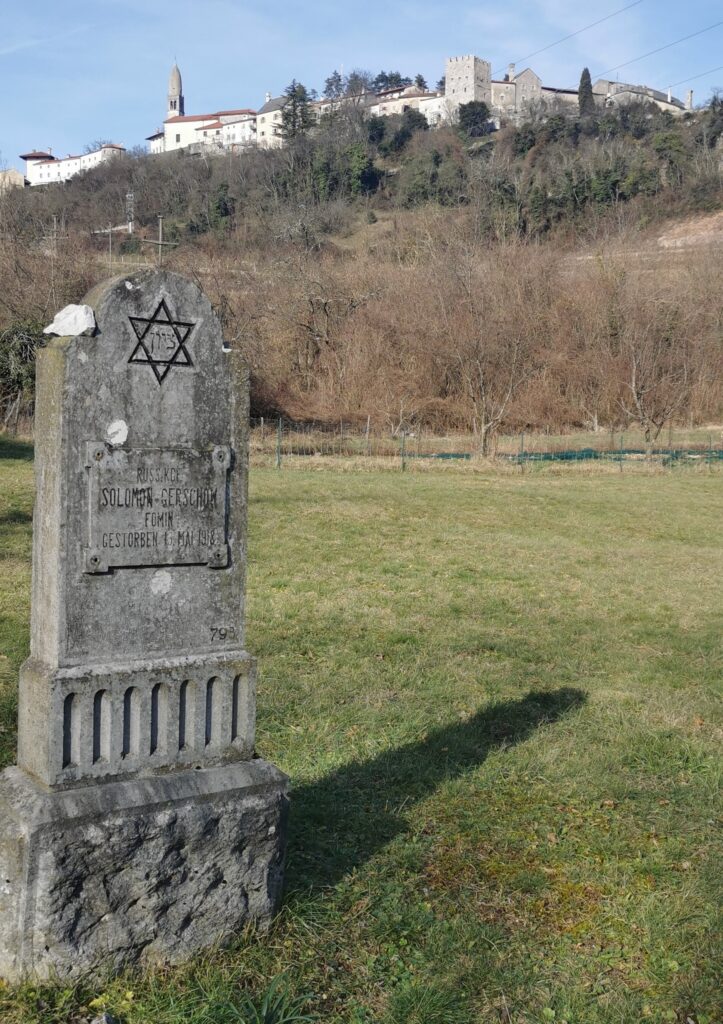Learn More

Since the Medieval period, Jews were forbidden to possess weapons and were often barred from serving in armies. During the years of the Emperor Joseph II, the Austrian authorities began to consider military service as a means of encouraging the “civilising” (and assimilation) of all Jews. Despite several oppositions, in 1788-89 Jews were approved to enrol in the Imperial Army, in the baggage train and in the infantry.
In the westerly territories, this change was met with a largely positive response, since Jews were now able to fight for the Fatherland, and as a result felt more accepted and tolerated.
In reality, the anti-Jewish prejudices did not disappear, and they were accused of having a “divided loyalty” to the Habsburgs and to Judaism, and therefore viewed as potential traitors. In the eastern zones, where the Jewish Communities were more religious, conscription and the distancing of youths from their families and coreligionists was viewed as a tragedy, which could lead to conversion and the crumbling of their Jewish culture.
During the First World War, around 300,000 Jews fought in the Austro-Hungarian army, most of whom were loyal to the Habsburgs and there was a large number of Jewish Officers: at least 238. They lost their positions, however, after the Anschluss with Nazi Germany.
In the Italian cultural territories, such as Trieste and Gorizia, there were many irredentist Jews, most of whom were young; but in general terms they were a minority. There were viewed with suspicion by the Austrian authorities and many were interned in concentration camps or other areas. Among them was Carolina Luzzatto Coen (who was eighteen years old at that time) and the family of Marcello Morpurgo.
The military cemetery of Stanjel was built between 1915 and 1917, as is written on the surviving monuments that surrounded the entrance gate, which itself no longer exists. The initial project was by the architect Joseph Ulrich, but was finished under the direction of the architect Max Fabiani. Men from both the Austro-Hungarian and Russian armies were buried in the cemetery. The location was chosen because it was close to the railway line and to the Hospital to which the Russian soldiers were taken. Prisoners from the Tzarist army were made to work on the cemetery’s construction.
Unfortunately, nowadays there is hardly anything left of this site, apart from photographs and archival references: according to Austrian archives, there were 993 people buried here; according to the Italian archives, there were 1,315.
Few elements remain, but two gravestones of Jewish soldiers survive: Dezső Steiner, non-commissioned Officer of the 46th regiment, who died on 19 August 1917, and the Russian Solomon Gershow Fomin, who died on 13 May 1918.
At the bottom of the Cemetery there remains a shrine in the form of a Temple with a monumental staircase. On the gable are carved a dedication to the fallen soldiers “FILIIS OPTIMIS PATRIA GRATA” with the coats of arms of Austria and Hungary, along with the motto Viribus Unitis.
SOURCES:
Rosanna Supino and Daniela Roccas (eds), L’apporto degli ebrei all’assistenza sanitaria sul fronte della Grande Guerra, Trieste Conference Proceedings, 8 May 2016, Silvio Zamorani Editore, Turin 2017
Erwin A. Schmidl, I soldati ebrei nell’esercito asburgico. 1788-1918, Leg, Gorizia 2008
https://itinerarieculture.blogspot.com/2020/04/ambiente-e-territori-stanjel-slovenia.html
https://www.visitstanjel.si/it/racconti-esclusivi/la-grande-guerra
Translation from Italian to English by Bethany Gaunt
Project by
Jewish Community of Trieste and Ca’ Foscari University Venezia
Info
visit@triestebraica.it
